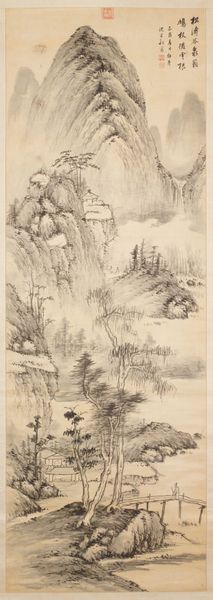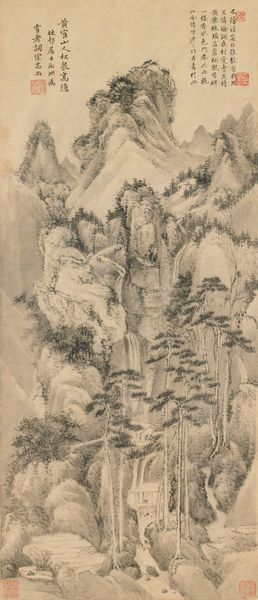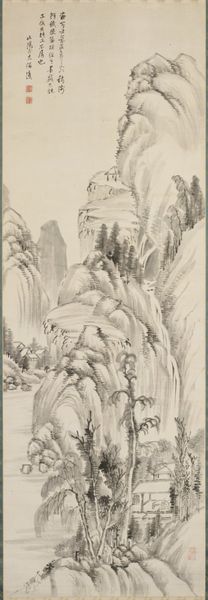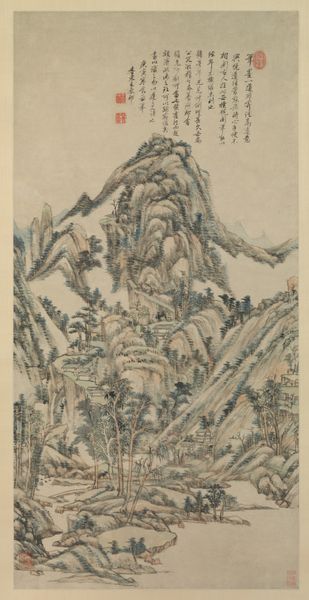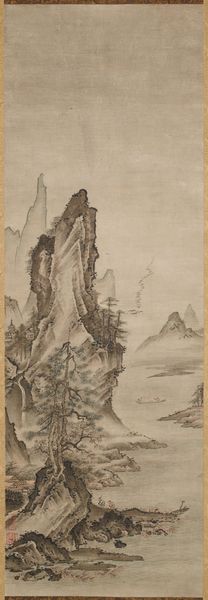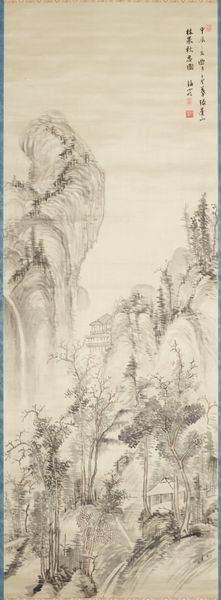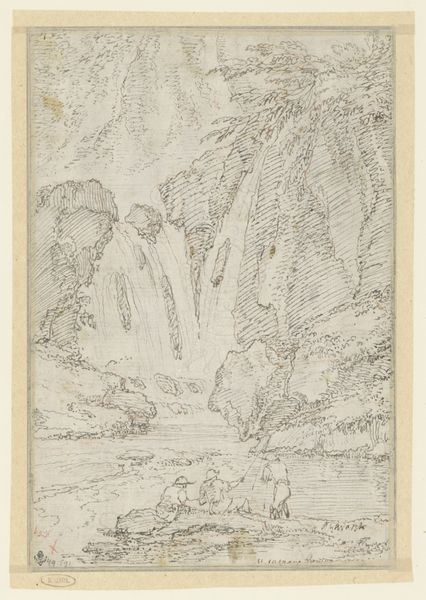
drawing, tempera, ink
#
drawing
#
tempera
#
asian-art
#
landscape
#
ink
#
calligraphy
Dimensions: Image: 46 7/8 x 16 1/8 in. (119.1 x 41 cm) Overall with mounting: 90 x 23 1/4 in. (228.6 x 59.1 cm) Overall with knobs: 90 x 26 3/4 in. (228.6 x 67.9 cm)
Copyright: Public Domain
Editor: We're looking at "Landscape in the style of Huang Gongwang," a tempera and ink drawing from 1581 by Mo Shilong, at the Metropolitan Museum of Art. There’s a delicate, almost ethereal quality to the mountains, created with soft washes of ink. How would you interpret its formal aspects? Curator: Indeed, the drawing exemplifies the literati tradition's emphasis on brushwork and ink tonality. Note how the artist utilizes varying ink densities, achieving a subtle atmospheric perspective. Consider the compositional structure—the interplay between the solid, voluminous mountain forms and the delicate, almost skeletal, trees in the midground. The eye is drawn upward, navigating a carefully constructed vertical space. It is this orchestration of pictorial elements that defines the aesthetic experience. Editor: The calligraphy seems integrated into the overall composition rather than just being an addition. Is that correct? Curator: Precisely. The calligraphic inscription isn’t merely descriptive but actively contributes to the overall visual texture. The placement, the size, and the style of the script create a dynamic tension against the stillness of the landscape itself, a conversation between word and image, mark and void. Editor: It's fascinating how the lack of bright colors emphasizes the skill of the ink-wash technique. I also noticed the details, like the minuscule houses nestled in the mountain. What do those intimate scenes contribute? Curator: Those small details act as anchors, inviting the viewer to enter the landscape, to partake in its stillness. Their presence underscores the relative scale, magnifying the grandeur of nature. Moreover, their presence underscores the relationship between humans and nature, and they become structural and metaphorical supports in the overall aesthetic effect. The artist utilizes carefully placed strokes that become part of the complex surface. Do you notice their subtle variations in width, length, and angle? Editor: Yes, now that you mention it. These stylistic attributes are interesting in their implementation. Curator: The formal elements create a self-contained system of references in ink-wash technique, one that remains captivating through its own intrinsic order. Editor: I see now. Thank you for making that clearer to me.
Comments
No comments
Be the first to comment and join the conversation on the ultimate creative platform.
